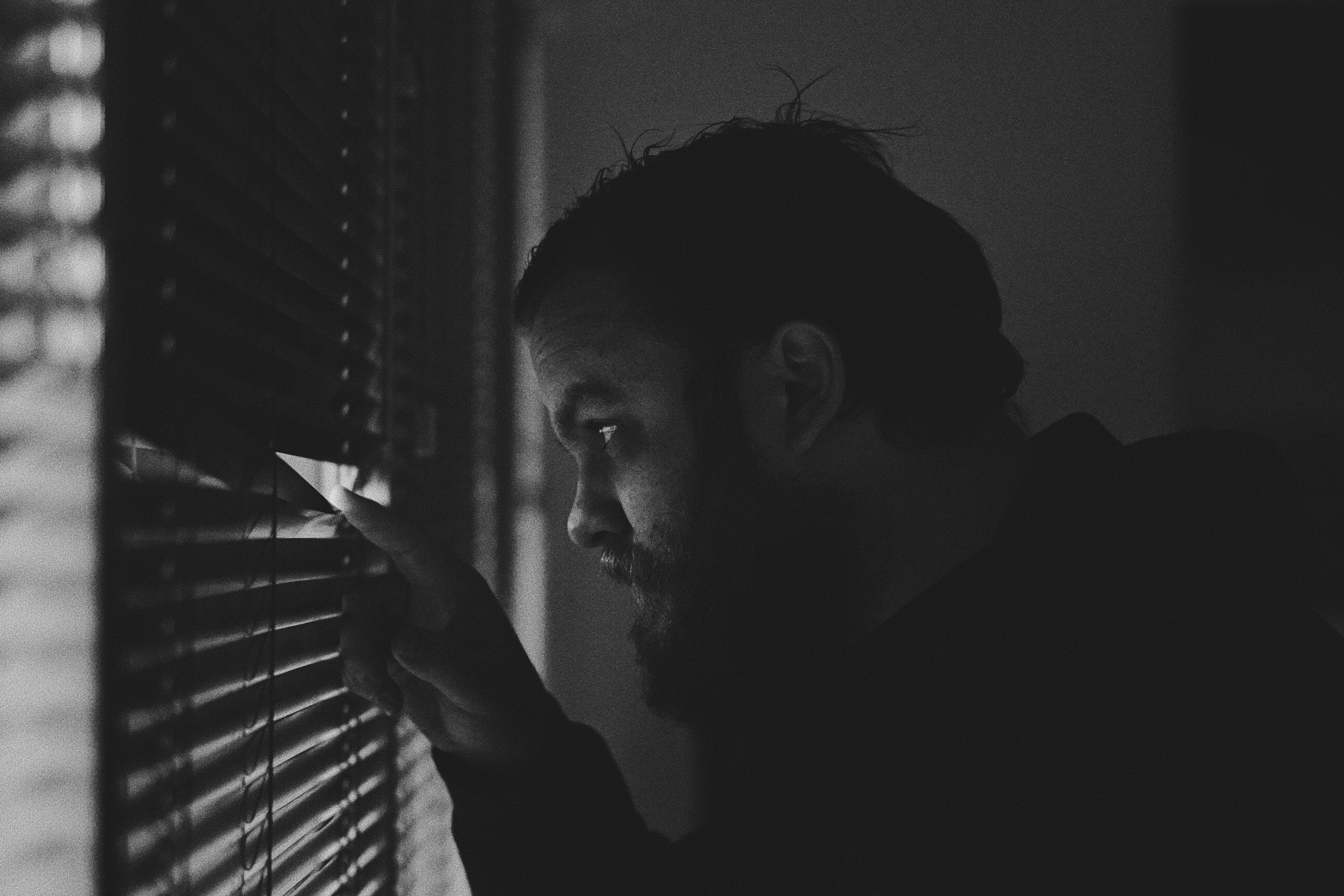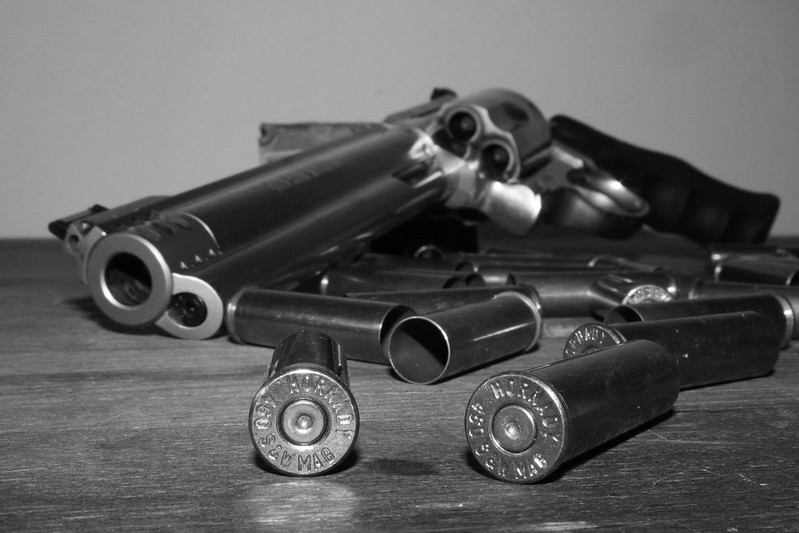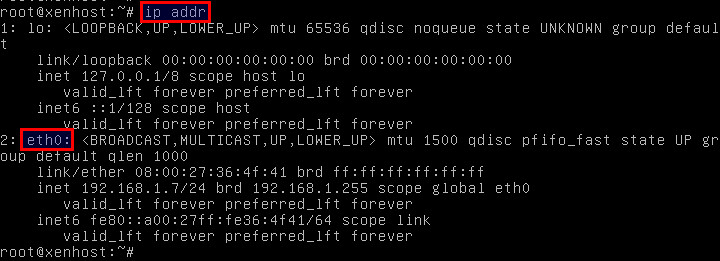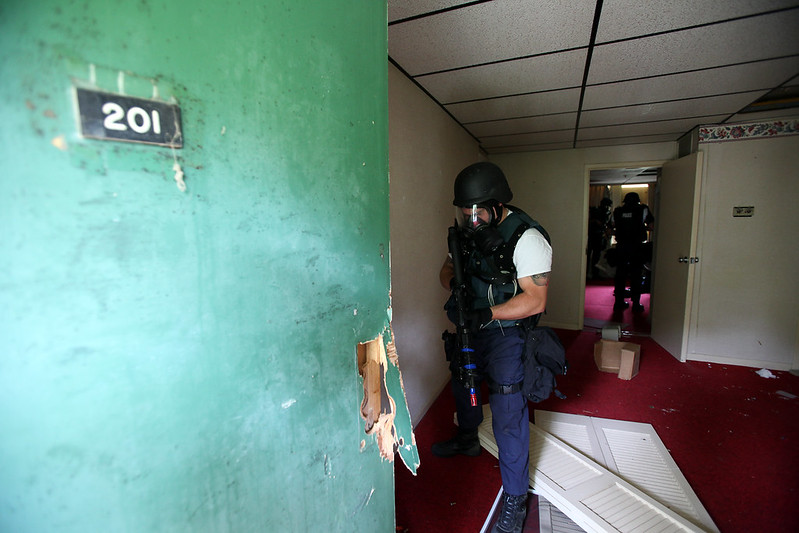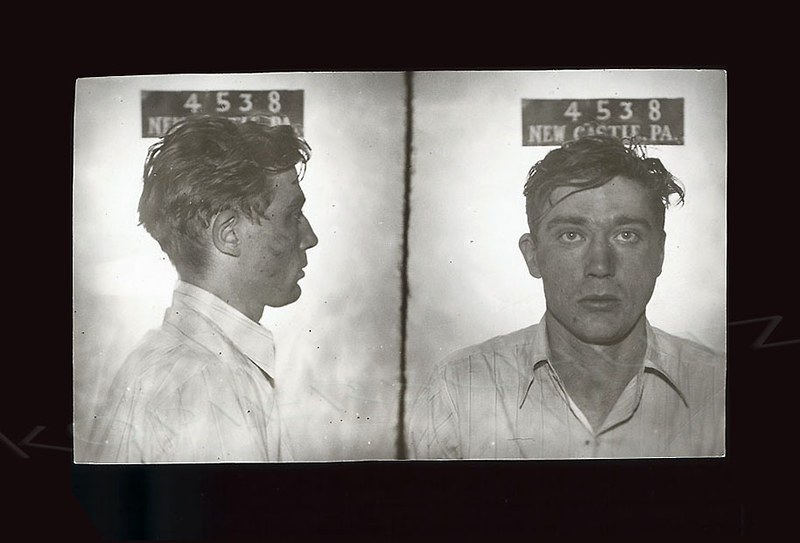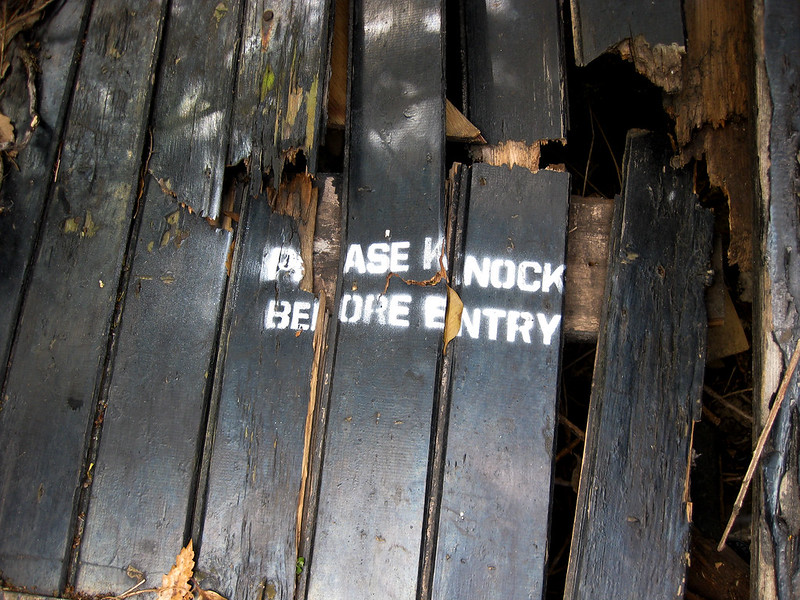This week’s top three summaries: R v Herta, 2018 ONCA 927, R v Williams, 2019 BCCA 49, and R v Rigo, 2018 BCSC 1807
R. v. Herta (ONCA)
[Nov 21/18] S.8 Charter - Challenge based on Confidential Informant Insufficiency - Effect of Editing Credibility Portion - 2018 ONCA 927. [Reasons of J. Michal Fairburn J.A., Pepall, Lauwers JJ.A. Concurring]
AUTHOR’S NOTE: In this case, Fairburn. J.A. analysed a warrant granted primarily on the basis of a Confidential Informant. The Crown decided to redact almost all the "credibility" portions of the information related to the CI from the Information to Obtain the warrant. This situation is akin to reliance on an anonymous tipster - essentially there was no credibility information before the court. Consequently, the other two Debot factors were significant to the consideration of the court. Here, the warrant fell apart on the assumption that anything would be found within the residence to be searched. Where the target of the warrant lives at the residence, some inferences about where they store items may be present. However, when that is removed from the situation, no inferences about location of storage are available and the grounds have to rest on the tip entirely for where the evidence of the offence will be found. Here, that evidence was lacking.
Pertinent Facts
"In summarizing those grounds, I start with the central observation that the appellant was not the subject of the search warrant executed at his home. Indeed, there is nothing to suggest that the appellant was even known to the police before the search warrant was executed. Nor is there anything to suggest that, at the time of the search, the police knew who lived at or owned the appellant's home." (Para 6)
"The search arose strictly from the fact that a man by the name of Derek Callahan was seen arriving at that location. Callahan was wanted for robbery. He was alleged to have placed the victim in a headlock, stealing his earphones and gold chain. There is no indication that a weapon was used during the commission of the robbery. A warrant was issued for Callahan's arrest." (Para 7)
"The CI provided additional information on the day before the search warrant issued. The CI said that within the previous 24 hours he or she had seen Callahan in the east end of Windsor. The CI told the affiant three things that are critical to the grounds for the search warrant:
(a) he or she saw Callahan carrying a gun
(b) Callahan had the gun for "protection" because he was in a "dispute" and
(c) the CI "knew" that Callahan would "not be anywhere without the gun." (Para 10)
"The affiant started looking for Callahan's car in the general residential neighbourhood to which his phone had been tracked. Although Callahan's car was not in the driveway of 1670 Clover Avenue when the affiant first drove by that location, Callahan's Pontiac G6 was there when the affiant drove by a second time at around 6:13 a.m. It was clear that Callahan had just arrived. The affiant saw him walking toward the front door of the residence." (Para 13)
"Instead of pursuing a Feeney warrant, though, the police obtained an authorization to search the entire residence for the firearm that the CI said he or she had seen Callahan carrying the day before." (Para 17)
"The affiant then prepared an ITO for a warrant to search 1670 Clover Avenue. As of 8:55 a.m., Callahan's car was still in the driveway and as of 10:00 a.m., when the application for the warrant was made, Callahan's phone was still registering in that same residential neighbourhood. The warrant issued at 10:20 a.m., authorizing the search for a firearm and ammunition at "[t]he residence of Derek Callahan ... at 1670 Clover Avenue, Windsor, Ontario"." (Para 14)
"The actual search is described in the agreed upon facts as follows:
At 12:50 pm, the police K-9 unit entered the residence again and upon completion of another search, advised officers ... of specific places to search based on indications from [the dog]. The subsequent search by ... officers led to the plain view discovery of suspected illicit substances and drug paraphernalia and a more intrusive search based in part on indications by [the dog], led to the discovery of further suspected illicit substances secreted throughout the residence including inside floor vents. No weapons were found." (Para 15)
Standard of Review
"The question for a reviewing court is not whether the court would have issued the warrant or authorization, but whether it was open to the issuing justice to have done so. In a case like this, involving a s. 487 warrant, the question is whether there are reasonable grounds to believe – constitutionally defined as credibly-based probability – that there is evidence respecting the commission of an offence in the location to be searched: Hunter v. Southam Inc., 1984 CanLII 33 (SCC), [1984] 2 S.C.R. 145, at pp. 167-8. Credibly-based probability exceeds suspicion, but falls short of a balance of probabilities: R. v. Sadikov, 2014 ONCA 72 (CanLII), 305 C.C.C. (3d) 421, at para. 81."
Section 8 Analysis - Were there Sufficient Grounds for the Warrant to Issue?
"The trial judge was alive to the fact that the search warrant in this case rose or fell on the strength of the CI information. In considering that issue, he correctly turned his attention to the three [R. v. Debot, 1989 CanLII 13 (SCC)] criteria: whether the CI was credible, and whether the CI information was corroborated and compelling."
Debot: Credibility
The CI credibility information that remained unredacted was very limited: "there remained information about the fact that the CI and affiant had been in a prior informant/handler relationship, that the CI had provided information in the past and that the information had led to the execution of warrants resulting in arrests and the seizure of drugs named in those warrants." (Para 31)
"As mentioned, I agree with the trial judge's articulation of "concern" over the CI's credibility, but would add the following to his list of concerns:
(a) Although the CI and affiant had been in an informant/handler relationship, redactions made it impossible to know the duration of that relationship: "less than [redacted] years".
(b) Although the ITO suggests that the CI had provided information leading to the execution of warrants in the past and parties named by the CI being "arrested", redactions made it impossible to know the number of occasions that had occurred.
(c) Although the affiant suggested that the CI had "provided information which led to" something in the past, that something had been redacted.
(d) Although the CI may have had a criminal record, if he or she had one, it was to be "outlined in an appendix to the ITO", yet the entire appendix was redacted.
(e) Although the affiant acknowledged that the CI had a motive to provide information, whatever served as that "motivation" was redacted. How great the CI's incentive to provide information remains entirely elusive." (Para 32)
Debot: Corroboration
"The trial judge noted that there was no need for every detail provided by a CI to be confirmed. Without referring to anything in specific, the trial judge concluded that the CI information had been “corroborated by police investigation” prior to the search and that there was “sufficient corroborative evidence to warrant the belief that Callahan was in possession of a firearm at the Clover residence or in his vehicle.”" (Para 35)
"I do not agree with the trial judge’s statement that there was “sufficient corroborative evidence to warrant the belief that Callahan was in possession of a firearm at the Clover residence”. Other than Callahan’s criminal record, which included two undated convictions for assault with a weapon and possession of a firearm, the confirmatory information had nothing to do with Callahan and guns. The corroborative facts related to information that many people would know, such as Callahan’s telephone number, the type of car he was driving and where he was hanging out. In the context of this case, those facts demonstrated that the CI knew or knew of Callahan. Although the CI’s confirmed knowledge of Callahan was one step toward reliability, in the circumstances of this case, particularly given the deficit in the credibility criteria, a larger step would have been beneficial." (Para 40)
Debot: Compelling
"The most significant concern lies with whether the CI information was compelling. As noted by Martin J.A. in R. v. Debot (1986), 1986 CanLII 113 (ON CA), 30 C.C.C. (3d) 207 (Ont. C.A.), at p. 219, and later adopted by Wilson J. on appeal, “[h]ighly relevant to whether information supplied by an informer constitutes reasonable grounds” are considerations involving whether “the informer’s ‘tip’ contains sufficient detail to ensure it is based on more than mere rumour or gossip” and “whether the informer discloses his or her source or means of knowledge”. Bald conclusory statements cannot support the veracity of CI information: Debot, at p. 1168-9; Rocha, at para. 26." (Para 42)
"I agree that the CI information about the dispute and Callahan not being anywhere without his gun is somewhat conclusory in nature. There is no basis upon which to assess the veracity of those claims because, as Martin J.A. put it in Debot, no "details" were provided and the CI did not disclose his or her "source or means of knowledge". Was the information about the dispute mere gossip, or did Callahan tell the CI that he was in a dispute? Did someone else tell the CI that fact? Was the information about Callahan carrying the purported gun at all times gossip or conjecture on the part of the CI? Although the details supporting those claims may have been in the appendix to the ITO, the contents of the appendix were redacted. Thus, while I would not discount the claims about the dispute and Callahan carrying a gun altogether, I would not characterize them as "compelling"." (Para 47)
"In this case, although the CI said that he saw Callahan with a firearm, the CI did not connect the firearm to 1670 Clover Avenue. The redacted ITO does not enlighten the reader as to where the CI saw the gun, e.g. in a house, a car, a place of business, a park or any other location. The redacted ITO merely says that Callahan and the gun were seen in the east end of Windsor. The redacted ITO does not even address whether the appellant's home rests in that part of Windsor." (Para 49)
" Accordingly, the only information that could support the reasonable grounds to believe that Callahan took a rifle into 1670 Clover Avenue rested on the CI’s statement that Callahan was in a dispute and would not go anywhere without the gun. If those statements were compelling enough to give rise to a credibly-based probability that Callahan took a rifle into the location searched, then they would be compelling enough for a search warrant for any location that Callahan attended. This would have turned Callahan into walking, ready-made grounds for belief. That is a sweeping proposition, particularly in light of the weak and conclusory nature of those statements in the ITO, the minimal information about credibility and the weak nature of the corroboration." (Para 51)
Misleading Information about Callahan's Residence
"1670 Clover Avenue was not the “residence of Derek Callahan”. It was the residence of Benjamin Herta. The correct wording could have been easily placed on the face of the warrant. This is not just about technicalities. If 1670 Clover Avenue had in fact been Callahan’s residence, it might have given rise to the reasonable inference that Callahan would secret his rifle at his own place. That inference falls away when the true state of facts is known." (Para 54)
"The respondent maintains that when the ITO is considered in context, it would have been clear to the issuing justice that Callahan did not live at the location searched. I disagree. Although there is mention of the fact that the police were looking for where Callahan was staying in the weeks following the robbery, and the CI had told the police that Callahan was “staying at numerous different residences” to evade the police, that is not inconsistent with Callahan’s “residence” being at 1670 Clover Avenue. The reference in the ITO to that home as Callahan’s “residence” left the potential erroneous impression that, at least as of the day of the search, the police had satisfied themselves that it was actually Callahan’s home." (Para 55)
Conclusion and 24(2)
"Properly considered, the CI information was of insufficient strength to support the search warrant for the appellant's residence. As the trial judge observed, the CI's credibility was of "concern". Although some information was corroborated, it did not compensate for the void left by the credibility assessment. The CI's tip was not compelling in relation to whether a firearm — a 303 rifle — would be found in 1670 Clover Avenue. The totality of circumstances could not support the search warrant. I conclude that the appellant's s. 8 rights were breached." (Para 58)
Seriousness of the Charter Infringing State Conduct
"At the same time, this case involves some sloppy work, specifically around the language that mistakenly suggested that Callahan lived at 1670 Clover Avenue. Although I find that there was no intention to mislead the issuing justice, it could have had that effect: R. v. Morelli, 2010 SCC 8 (CanLII), [2010] 1 S.C.R. 253, at paras. 99-101. At most, the wording was somewhat careless. It is not so serious, though, that it rises to the level of something from which the court must dissociate itself. There is a human element in what we all do and people can make innocent mistakes. Not everything is deserving of a label." (Para 64)
"Accordingly, I conclude that the first Grant factor is neutral in the admissibility analysis." (Para 65)
Impact of the Breach on the Charter-protected interests of the accused
"The search was clearly extensive and highly invasive. Indeed, the trial Crown agreed to a set of acts that described the search as "intrusive"." (Para 68)
"First, everyone inside of the home was escorted out by the police." (Para 69)
"After all of the people were out, a sniffer dog was sent in along with the Emergency Services Unit. Then, other officers were sent in to take photos of the appellant's home, after which a sniffer dog was sent in again. The search led to both the plain view discovery of drugs as well as drugs found only with the assistance of a sniffer dog. Indeed, so extensive was the search that some of the illicit substances were found secreted in floor vents. There is simply no denying that it was a very intrusive home search." (Para 70)
"Although I am mindful of the fact that a Feeney warrant could have been obtained, allowing the police to lawfully enter the home to arrest Callahan, the Feeney warrant's ambit would have been confined to arresting Callahan. Significantly, it would not have allowed the extensive search of the appellant's entire home. I conclude that this was a highly invasive search — the breaching of the door, multiple police officers, sniffer dogs, Emergency Services Unit, photographs, searching in floor vents, and all. It had a heavy impact on the appellant's s. 8 Charter-protected interests." (Para 71)
Balancing
"I conclude that the evidence should be excluded. Although I would place the seriousness of the state conduct at the middle of the spectrum, the impact of the breach on the Charter-protected interests of the appellant clearly outweighs it, existing at the apex of seriousness. Society’s interest in having an adjudication of this case on the merits is important, but so is society’s interest in ensuring that extensive searches of private residences, those involving multiple police officers, photos, dogs and more, are justified. There is no precise equation that can be applied but, in this case, the fact that the appellant’s privacy was seriously invaded for reasons that had nothing to do with him decisively tips the scales in favour of exclusion." (Para 74)
Appeal allowed, evidence excluded, acquittal entered (Para 75)
R v Williams (BCCA)
[Feb 8/19] Inference v Speculation - Answering Jury Questions - 2019 BCCA 49 [Reasons by Fitch J.A., Bennett and Hunter JJ.A. Concurring]
AUTHOR’S NOTE: In this case, the central question was could the Jury infer that the Accused continued to drink after he left a bar in the absence of testimony about that time period. The only piece of evidence was a statement of intention to get more alcohol overheard by the bar staff on the way out. Jury asked a question about it. Crown called this speculation. Defence said, of course they can infer it. The effect of the answer to the jury was to call it speculation, without actually answering their question. Appeal was allowed on this basis.
Pertinent Facts
"The appellant testified that at the time of the offence he was accustomed to drinking heavily — about 15 beers three or four times a week after work. He said he had experienced alcohol-induced blackouts in the past. On the day of the offence, the appellant said he consumed four or five beers in the late afternoon before heading downtown with the intention of getting drunk. The appellant said he recalled drinking more than one tequila shooter at a bar on Granville Street. He claimed to have no memory of the rest of the evening, including his attendance at Earls, and woke up in what he thought was the "drunk tank". He testified that he did not know whether he stabbed Mr. Smith." (Para 8)
"Mr. McNally testified that he overheard the appellant and Mr. White say they were going to a liquor store when they left Earls:
Q. Now, what -- what, if anything, do you recall them saying when they left? Did they say where they were going?
A. I don't remember them saying where they were going, but I do recall the liquor store being mentioned, but no venues." (Para 11)
"Mr. McNally's evidence on this point was not challenged. Neither the admissibility of this evidence nor the use that could properly be made of it was addressed at any point during the trial." (Para. 12)
"The defence called Carolyn Kirkwood, a forensic toxicologist, as an expert witness. Based on the bar tab and Mr. McNally's evidence as to what the appellant drank at Earls, she testified that the appellant would have a theoretical maximum blood alcohol concentration of between 179 and 226 milligrams of alcohol in 100 millilitres of blood at 11:00 p.m." (Para 13)
"Ms. Kirkwood testified that individuals with blood alcohol concentrations between 90 and 250 milligram percent can experience loss of critical judgment and impaired memory, comprehension and motor coordination. As an individual's blood alcohol concentration approaches 300 milligram percent, symptoms can include mental confusion and disorientation. She testified that the extent to which an individual displays symptoms relating to significant alcohol consumption can depend on that individual's tolerance to alcohol. More experienced drinkers can exhibit fewer overt signs of impairment. She testified that an individual with a blood alcohol concentration over 246 milligram percent might experience impairment of judgment in terms of understanding the consequences of their actions." (Para. 14)
"Mr. Smith’s death was caused by a stab wound to the chest which resulted in the severing of the brachiocephalic vein and a catastrophic loss of blood. Mr. Smith suffered more than one injury caused by a sharp-edged weapon in the fight." (Para 19)
"In instructing the jury on the difference between direct and circumstantial evidence, the judge said this:
[56] I should also caution you that an inference is a much stronger kind of belief [than] conjecture or speculation. If there are no proven facts from which an inference can be logically drawn, it is impossible to draw an inference. At best, you'd be speculating or guessing, and that is not good enough. . . ." (Para 29)
"In his instructions on the intent required for murder, the judge told the jury to consider all the evidence about what occurred on the evening in question, including evidence about the appellant's consumption of alcohol. The judge reviewed the evidence he considered most relevant to the defence of intoxication. He did not mention Mr. McNally's evidence that he overheard the appellant and Mr. White discussing their plan to go to a liquor store after leaving Earls." (Para. 30)
The Jury Question
"What role, if any, can speculation regarding unaccounted for time play in our deliberations? For example, there is roughly two hours between Earls attended by the accused, and the incident in question. Is it acceptable legally for us as jurors to consider whether Mr. Williams continued drinking or ate, or did anything else?" (Para 37)
The Judge's Response
"I want to remind you that you are the finders of fact in this proceeding and you should not focus or speculate as to what may or may not have happened during the unaccounted time. Now, that's only the first part. The evidence is what the evidence is before you and it is for you to draw whatever inferences you choose to draw from the facts as you find them. In other words, you can draw certain facts, it's completely up to you as to what happened before Earls, at Earls, and of course what happened at or about the time of the offence -- or the incident. But you can, from those facts, draw certain inferences to deal with the issues which you've raised." (Para 41)
The Importance of Answering a Jury's Question & What is Speculation?
"Jury questions indicate that at least some jurors are having a problem with an issue in the case. By asking a question, the jury seeks such clarification and guidance it considers to be necessary to push its deliberations forward to a verdict. The jurors will rely on the answer given by the judge to resolve the confusion or uncertainty that motivated the question: R. v. Naglik, 1993 CanLII 64 (SCC), [1993] 3 S.C.R. 122 at 139." (Para 51)
"As noted in R. v. S. (W.D.), 1994 CanLII 76 (SCC), [1994] 3 S.C.R. 521 at 530:
There can be no doubt about the significance which must be attached to questions from the jury and the fundamental importance of giving correct and comprehensive responses to those questions. With the question the jury has identified the issues upon which it requires direction. It is this issue upon which the jury has focused. No matter how exemplary the original charge may have been, it is essential that the recharge on the issue presented by the question be correct and comprehensive. No less will suffice. The jury has said in effect, on this issue there is confusion, please help us. That help must be provided. (Para 52)
The Inference was Available
"I am, however, satisfied that it was open to the jury to draw a reasonable, non-speculative inference that the appellant continued to drink alcohol after leaving Earls but before the stabbing." (Para 53)
" In coming to this conclusion, I have placed particular reliance on the following pieces of evidence. First, the appellant testified that he began drinking heavily in the late afternoon on the day of the offence and went downtown with the goal of “getting drunk”. Second, on the uncontested evidence at trial, the appellant continued to pursue this goal during the two hours he spent at Earls. The bar tab and Mr. McNally’s evidence confirmed that the appellant consumed a considerable quantity of alcohol during this time. Third, when the appellant left Earls, he was overheard by Mr. McNally conversing with Mr. White about going to a liquor store." (Para 54)
" As mentioned, the Crown agrees with this characterization of Mr. McNally’s evidence and concedes that it was admissible. The Crown’s concession is well-founded. The remark Mr. McNally overheard illuminated the appellant’s state of mind and was not made in circumstances of suspicion. In my view, it was reasonably capable, on its own, of being used by the jury to ground an inference that the appellant acted in accordance with his stated intention and went to a liquor store after leaving Earls: R. v. Starr, 2000 SCC 40 (CanLII) at paras. 168-169 (per Iacobucci J. for the majority), paras. 6-8 (per McLachlin C.J.C., dissenting). I do not understand the Crown to take issue with this proposition. To complete the chain of reasoning, it would have been open to the jury to conclude that the appellant went to a liquor store for the purpose of acquiring more alcohol. As the appellant was not in possession of liquor on his arrest, it was open to the jury to infer that he and Mr. White consumed whatever they purchased at the liquor store prior to the stabbing. Taken together, this evidence entitled the jury to infer that the appellant went to a liquor store after Earls for the purpose of continuing to pursue his stated goal and that he did so in the one-and-a-half hours that elapsed between his departure from Earls and his arrival at the scene of the stabbing.
The Instruction Failed to Inform The Jury
"I have come to the conclusion that the judge's answer to Question #1 fell short of the clear and comprehensive response that was required in the circumstances for five related reasons." (Para 56-61)
- Telling the jury "not to focus" on the 1.5 hours had the effect of telling them this was not a significant factual issue
- Telling the jury "not to speculate" had the effect of telling them that the did not have sufficient evidence to form an inference and by focusing in this area they were speculating.
- The answer did not summarize for the jury the relevant evidence that they could consider for the purpose of making an inference about what happened with respect to alcohol consumption.
- The answer did not alert the jury to Mr. McNally's evidence about what he overheard.
- The answer that they could draw inferences about "before Earls, at Earls and at the time of the incident" left out the time period that they were asking about - between Earls and the incident. Consequently, the answer was unlikely to address their question.
Appeal allowed, new trial ordered.
R v Rigo (BCSC)
[Oct 1/18] – Charter s. 8 - Dog Sniff Search and Objective Reasonable Grounds for Subsequent Arrest/Search – 2018 BCSC 1807 [Mr. Justice Brundrett]
AUTHOR’S NOTE: Dog sniff-search standards are fairly low. However, in this case, interpretation of the "alert" given by the dog led the court to determine that that objective reasonable grounds were not established by what the dog did in this case. The dog's indication here was ambiguous compared to its training. Consequently, the subsequent search of the car was a s.8 violation
Pertinent Facts
"The accused is facing trial on a charge of possession for the purpose of trafficking in fentanyl as the result of the seizure of the same substance from his vehicle on April 4, 2017 after a roadside stop of his eastbound van on Highway 1 in Chilliwack, B.C. After a search at roadside which included the deployment of a sniffer dog, and a later search at a local garage, the police found a significant number of fentanyl pills hidden in the rear interior wheel well of the van. The Crown’s allegation is essentially that the accused was a drug courier transporting these illicit narcotics to Calgary from Vancouver." (Para 2)
Grounds for Deploying the Dog
"Cpl. Catellier relied upon the strong odour of cologne or air freshener coming from inside the vehicle, the fact that the accused’s right arm and hand were shaking when he pulled over, the presence of multiple cell phones including a BlackBerry, the accused’s illogical story, the short duration of his trip from Calgary, and the officer’s belief that Highway 1 was a conduit for drugs, particularly around Chilliwack." (Para 183)
This was found to be sufficient for a reasonable suspicion to exist to deploy the police dog. (Para 186)
The Dog's Alert
"I am mindful that such searches are conducted without prior judicial authorization, and accordingly rigorous judicial scrutiny of the supporting grounds is called for: see Kang-Brown, paras. 26 (LeBel J.’s majority reasons) and 97 (Binnie J.’s concurring reasons) in the reasonable suspicion context. In R. v. Chehil, the Court offered the following:
[49] The consequences of a false indication by a sniffer dog can be severe. As discussed below, a positive indication for the presence of the smell of narcotics by a reliable dog may, depending on the circumstances, lead to reasonable and probable grounds for an arrest. If the police make use of a dog whose indications cannot be taken as a reliable sign of the presence of the smell of drugs, the false positive resulting from the dog's unreliable nose could lead to unnecessary arrests." (Para 200)
"The reliability of a particular alert is an important component of this analysis just as it is with the reliability of an informant: Goodwin v. British Columbia (Superintendent of Motor Vehicles), 2015 SCC 46 at para. 67; Florida v. Harris; R. v. Garofoli, [1990] 2 S.C.R. 1421 at pp. 1456-1457. (Para 202)
"To summarize, the following factors give rise to concern about the reliability of the particular alert in this context:
(a) the highly ambiguous nature of the dog’s partial sit signal in and of itself;
(b) the fact that the partial sit indication was given by PSD Doods for the first-time ever. Cpl. Catellier could not have recognized the partial sit as one that indicated the presence of narcotics;
(c) the fact that a partial sit indication was not a signal that PSD Doods had been trained to give and as such is not empirically validated;
(d) the incongruity of the dog’s inability to fully sit when measured against the factthat this detection dog was accustomed to being able to fully sit even in tight environments;
(e) the lack of a follow-up search of the exterior of the van, or a reset of the sniffer search, to clearly remove any ambiguity from the result of the first search;
(f) the change in Cpl. Catellier’s evidence as to the timing and degree of thealert; and
(g) the fact that the general conditions were “ideal” for the sniffer dog to search. (Para 208)
"Assessing the evidence as a whole, given the concerns I outline above, I cannot find that the partial alert Cpl. Catellier subjectively perceived from PSD Doods carried adequate reliability such that Cpl. Catellier’s reliance on the ambiguous possible alerting behaviour can be taken as a reasonable indication for the presence of narcotics on an objective basis." (Para 212)
"[I]mportantly, despite the other bases for his suspicions such as the wad of cash and his dog showing signs of being “in odour”, Cpl. Catellier fairly conceded that in this case he would not have arrested the accused but for what he thought was an alert from his detection dog for the presence of narcotics. It follows that Cpl. Catellier did not subjectively believe at the time that, even with subtle changes in his dog’s behaviour and with the discovery of the cash, he had proper grounds to arrest the accused without his dog’s final sit confirmation." (Para 220)
"The arrest of the accused and subsequent searches of the accused’s van incident to that arrest therefore violated s. 8 of the Charter." (Para 223)

